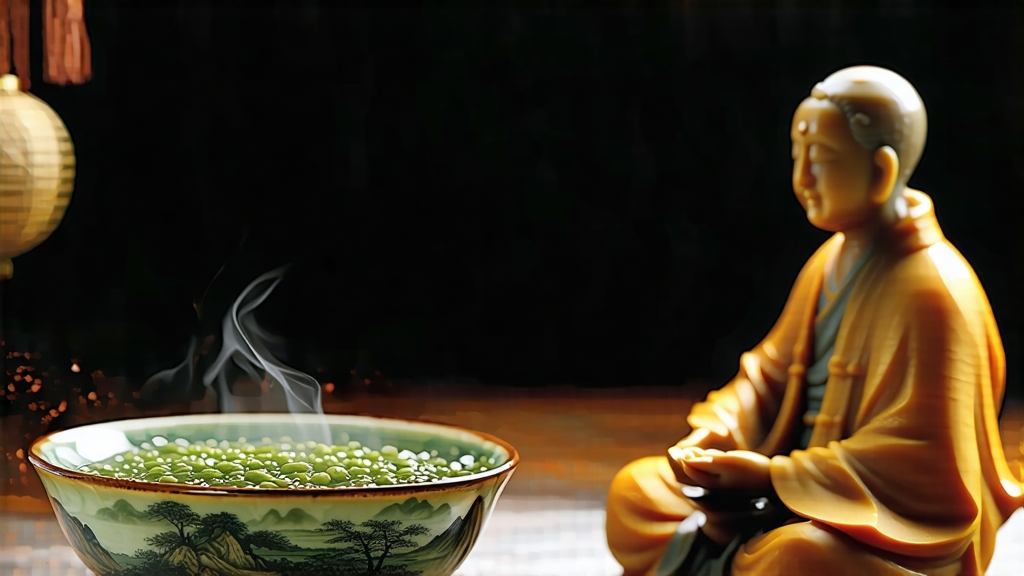
Tie Guan Yin, literally “Iron Goddess of Mercy,” is the most travelled ambassador of Chinese oolong. Born in the granite foothills of Anxi County, southern Fujian, this tea has slipped across oceans since the Qing dynasty, yet its heart remains in the morning mist that clings to the terraced gardens of Xiping and Gande. To understand it is to listen to a 300-year-old legend in which the goddess Guanyin guided a poor farmer to a hidden tea shoot; to taste it is to witness the dialogue between soil, fire, and time.
History whispers through three distinct stylistic eras. The oldest, “traditional charcoal,” survives in a handful of family cellars where tea is baked over lychee-wood embers for 30 hours, acquiring a deep honeyed note that lingers like temple incense. The second, “modern green,” emerged in the 1990s when Taiwanese vacuum-packaging technology arrived; farmers reduced oxidation to 15 % and skipped roasting, creating a neon-green leaf that brews into a spring orchid bouquet. The third, “new wave honey aroma,” is a 2010s response to global palates: a 25 % oxidation followed by low-temperature convection baking yields a cup that recalls peach skin and fresh cream. All three share the same genetic cultivar—Tie Guan Yin strain, a medium-leaf Camellia sinensis var. sinensis whose serrated edges resemble tiny iron hooks, said to be the goddess’s fingerprints.
Crafting Tie Guan Yin is choreography of stress and rest. Picking begins at dawn when two leaves and a bud still hold dew; the moment the sun crests the ridge, the basket must be on the withering rack. Under infrared lamps the leaves lose 10 % moisture, entering “quiet green” phase. Then comes yaoqing, the midnight shaking: 3 kg of leaves are tossed in a bamboo drum rotating at 18 rpm, bruising edges just enough to invite enzymes to the banquet. After four cycles, the leaf aroma shifts from cut grass to ripe pineapple; this is the signal to arrest oxidation with a 280 °C tumble for 90 seconds. The half-green, half-brown leaves are wrapped in white cloth balls and rolled 32 times against the floor, compressing cells so tightly that aromatic oils migrate to the surface. Finally, charcoal embers or electric ovens dry the leaf to 3 % moisture, locking in a fragrance that will bloom months later in a distant teapot.
Water is the silent partner. In Anxi, spring water from granite fissures has a pH of 6.4 and TDS of 45 ppm—ideal for dissolving catechins without muting floral volatiles. When brewing abroad, aim for similar softness; if your tap water is hard, blend one part distilled to two parts tap. Pre-heat a 120 ml gaiwan until too hot to touch, then fill one-third with 7 g of leaf. The first infusion, 95 °C for one second, is merely an awakening—pour it over the cups to season them. The second, 92 °C for eight seconds, releases a liquor the colour of early dawn; inhale through the cup’s rim and you will catch the “ring aroma,” a halo of orchid that hovers 2 cm above the surface. By the fifth infusion, extend time to 25 seconds; the leaf has unfurled into miniature jade rafts, and the taste turns to white peach with a mineral tail that the locals call yanyun, “rock rhyme,” borrowed from their Wuyi cousins to the north. A quality Tie Guan Yin endures nine brews; when the scent fades to sweet water, chew a leaf: a lingering tingle on the tip of the tongue signals residual amino acids, proof of craft.
Tasting notes can be decoded through a simple triangle test. Place three cups in front of you: one holds your Tie Guan Yin, another a green-style Taiwanese Baozhong, the third a roasted Da Hong Pao. Swirl, sniff, sip. Against the Baozhong, Tie Guan Yin shows a broader mid-palate creaminess; against Da Hong Pao, it displays sharper top-note florals and a lighter body. The key identifier is the “returning throat,” a cooling sensation that arrives 30 seconds after swallowing, as if you had breathed in mountain air after rain.
Storage is the final rite of passage. Charcoal